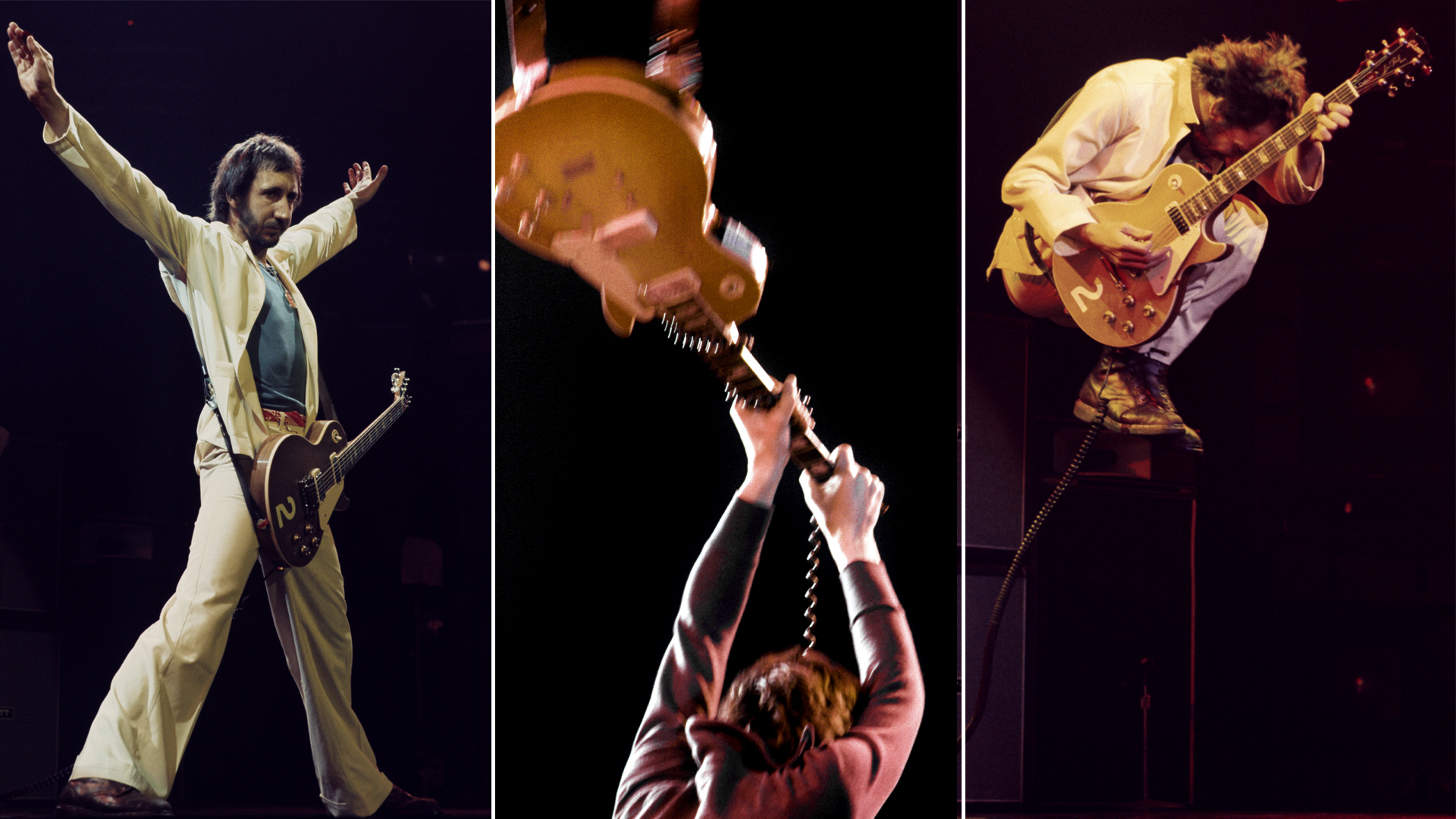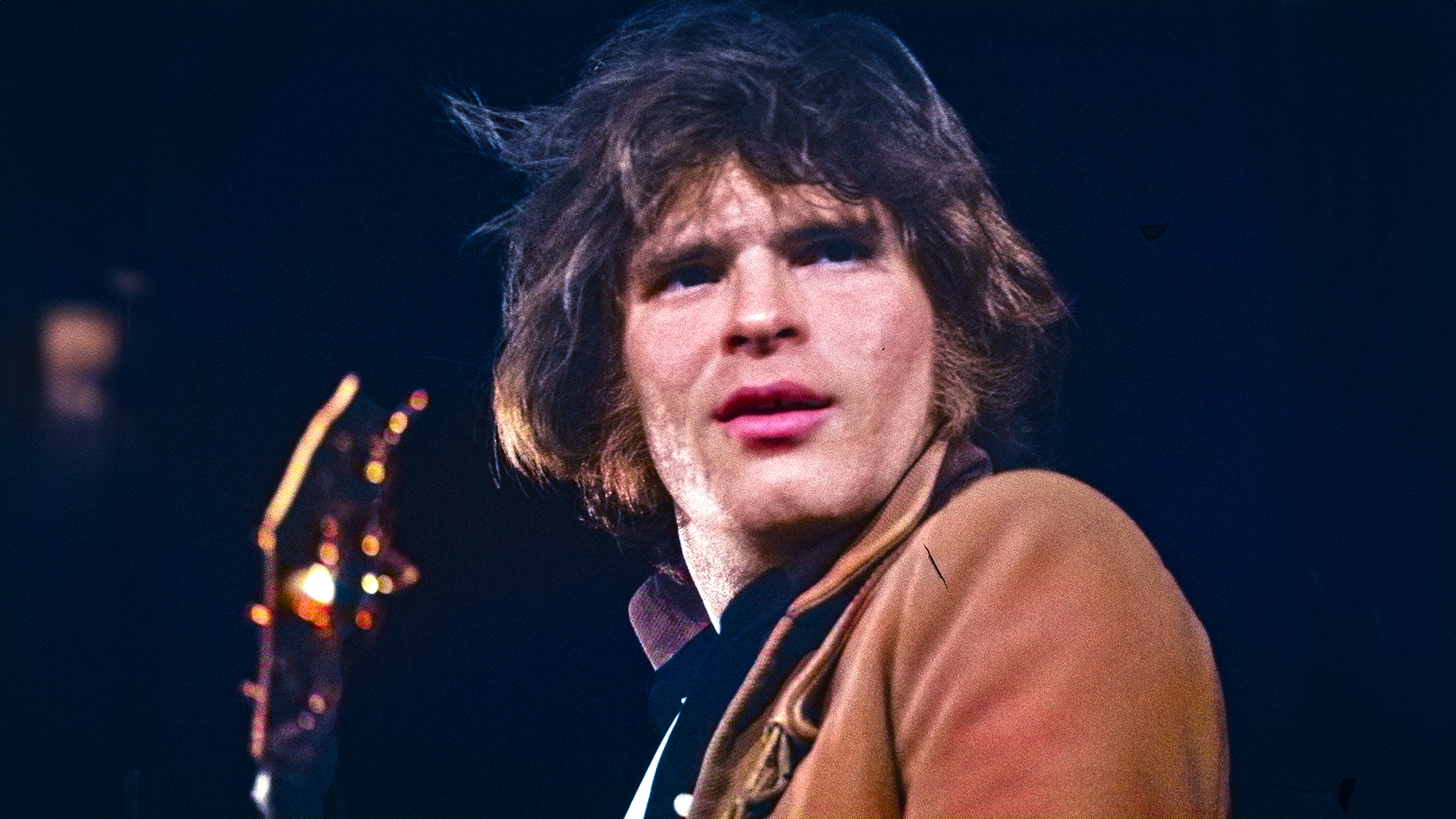“The right method is to bleed. Your hand and pick have to connect with the effing string” The Who's Pete Townshend on the correct way to do a windmill guitar strum — and what Keith Richards says about inventing the move with the Rolling Stones
As the guitarist explains, the windmill is fraught with danger, including fingernail tears and hand lacerations

If Pete Townshend initially felt awkward onstage, he quickly found his comfort zone. By the early years of the Who’s existence, Townshend had developed a repertoire of stage moves that made him one of the most dynamic guitar players to grace a stage in the 1960s and ’70s.
Equipment trashing was saved for the end of the shows, but long before then fans would have seen the guitarist perform his signature moves: the flying leap, the feedback pose and — perhaps most famous of all — the windmill, an arm-swinging acrobatic display in which he strikes the strikes the strings of his electric guitar with a sweeping motion from above or below.
Townshend uses the move like physical punctuation, emphasizing a downbeat or adding drama to a sustained chord. And while it’s associated with him and no one else, he’s never taken credit for creatingn it. Rather, he says Keith Richards did it first around 1964, in one of the Rolling Stones’ earliest performances.
“[The Who] supported the Stones for two shows,” Townshend explained in 2012 in an interview with David Letterman. “They were young, they were brand new and they had one hit, with a Chuck Berry song called ‘Come On.’ I met them backstage and they were all very charming.
"As the curtain opened, Keith Richards is doing this,” Townshend said, standing up to demonstrate the windmilling motion. "I was thinking, Wow, that’s so cool! I thought it was part of his thing.
“A couple of weeks later, we supported them again in a club in south London. I’m watching carefully, waiting, and he didn’t do it.”
At the first chance, Townshend asked Richards why he didn't perform the windmill.
All the latest guitar news, interviews, lessons, reviews, deals and more, direct to your inbox!
“He went, ‘What?’” Townshend recalled. “I can’t tell you what exactly what he said, but the inference was, ‘I’m Keith Richards. Do you really think I’m gonna do ballet?’ That was the inference.”

Richards had actually addressed the matter some 30 years earlier in our April 1983 issue.
“I never took credit for this. but apparently he said that he lifted that arm swing he does from seeing me,” Keef said. “I don't recall doing it, but I guess if he says so, he did. It's something I've never been aware of.”
Of course, pnce Richards denied performing the move, Townshend felt free to adopt it for himself. After years of working at it, he had the windmill perfected by the time the Who became a global touring act in the 1970s. By then he was saving the move for the big downbeat at the top of “Baba O’Riley” to bring the audience to its feet. Townshend made it look powerful and athletic, and even easy.
But as he told Guitar Player in our October 1989 issue, the antic is fraught with danger
“As soon as we'd hit ‘Baba O'Riley,’ I'd go djaaang, swing, swing, all my fingernails would just get broken off across,” he said. “And from then on I would be in absolute agony for the rest of the tour. I wouldn't be able to sleep. You know, at night my hand would be throbbing.
“And the other thing is, when you swing your arm and you've got a cut finger, blood pours out of it at a great rate, and it goes all over your strings.
“I’ve seen a lot of people do arm swings,” he added, “and I've never seen anybody do it right.”

Townshend explained that most guitarists who imitate the move splay their fingers out and use them to strum the guitar at the critical point of contact. That’s doing it wrong.
“The right method is to bleed, you know?” he said. “Your hand and the pick have to connect with the fucking strings.
“You don't open your fingers up and just sort of slap.
“And you have to be able to do it in a downward direction as well as an upward direction. Doing it from the top is right easy, but coming up from below...you know, you're going around, the string catches under your fingernail, carves it back, pulls it out and then goes poing, backwards. If you get it wrong.”
Townshend had decided by the time of our interview he was finished with the windmill. Like his habit of playing loudly — which resulted in deafening tinnitus — the windmill was destined to become a relic of his past.
“I just don't want to do that anymore. It's another example of the way that I developed a way of working which is disabling.”
Of course, he could hardly stop himself. The guitarist continues to perform the windmill in concert to this day — just quite a bit more carefully.
The Who have announced the group will play its last U.S. shows in August and September this year. However, despite his recent admission that playing live doesn’t “fill my soul” anymore, Townshend has offered hints that the band may take to stages again outside of the U.S.
Christopher Scapelliti is editor-in-chief of GuitarPlayer.com and the former editor of Guitar Player, the world’s longest-running guitar magazine, founded in 1967. In his extensive career, he has authored in-depth interviews with such guitarists as Pete Townshend, Slash, Billy Corgan, Jack White, Elvis Costello and Todd Rundgren, and audio professionals including Beatles engineers Geoff Emerick and Ken Scott. He is the co-author of Guitar Aficionado: The Collections: The Most Famous, Rare, and Valuable Guitars in the World, a founding editor of Guitar Aficionado magazine, and a former editor with Guitar World, Guitar for the Practicing Musician and Maximum Guitar. Apart from guitars, he maintains a collection of more than 30 vintage analog synthesizers.
